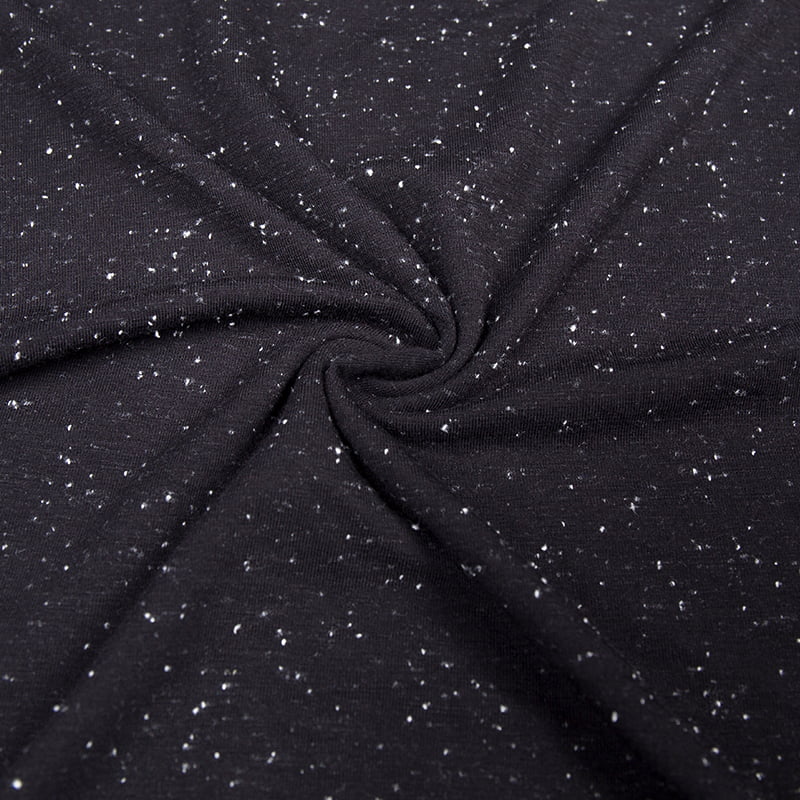
Different stitch densities in Jersey knitted fabric can significantly impact its characteristics, including its appearance, stretch, durability, and overall performance. Here are some of the key characteristics associated with different stitch densities:
1. Light Stitch Density:
Stretchiness: Jersey fabric with a light stitch density tends to be more stretchy and elastic. It has a greater degree of horizontal and vertical stretch, making it suitable for form-fitting garments and activewear where freedom of movement is essential.
Drape: Lightly stitched Jersey fabric has a soft and flowing drape. It conforms well to the body's contours, creating a flattering silhouette in fitted garments.
Sheerness: Light stitch densities may result in a slightly sheer fabric, especially if the yarns used are fine. This sheerness can be desirable for lightweight, breathable clothing items but may require lining or layering for modesty.
Breathability: The looser stitching allows for improved breathability, making it comfortable for warm-weather clothing.
2. Medium Stitch Density:
Balanced Stretch: Jersey fabric with a medium stitch density strikes a balance between stretch and stability. It provides a comfortable level of elasticity while maintaining its shape well.
Versatility: Medium-stitch-density Jerseys are versatile and suitable for a wide range of clothing items, from t-shirts and dresses to loungewear and casual outerwear.
Durability: The tighter stitches contribute to increased fabric durability and resistance to deformation. Medium-stitch-density Jerseys tend to hold their shape better over time.
Drape: While not as flowy as lightly stitched Jerseys, medium-density Jerseys still offer a good drape that works well for various dress styles.

3. Heavy Stitch Density:
Structure and Stability: Heavy-stitch-density Jersey fabric is characterized by a stable structure with minimal stretch. It is often used for clothing items where shape retention is critical, such as tailored dresses and structured tops.
Less Stretch: This fabric type has limited stretch compared to lighter densities, making it less suitable for form-fitting or highly elastic applications.
Warmth: The tighter stitches contribute to better insulation, making heavy-stitch-density Jerseys suitable for cooler weather or winter clothing.
Weight and Thickness: Heavy-stitch-density Jerseys are typically thicker and heavier, adding to their durability and resilience.
4. Variable Stitch Density:
Texture and Design: Some Jersey fabrics incorporate variable stitch densities to create texture or design elements within the fabric. For example, ribbed Jersey fabrics have alternating tight and loose stitches, resulting in a distinctive ribbed texture.
Stretch Variation: Variable stitch densities can create areas of greater or lesser stretch within the same fabric, allowing designers to control the fabric's performance characteristics in specific regions of a garment.


 English
English 中文简体
中文简体











